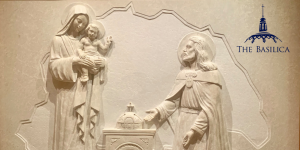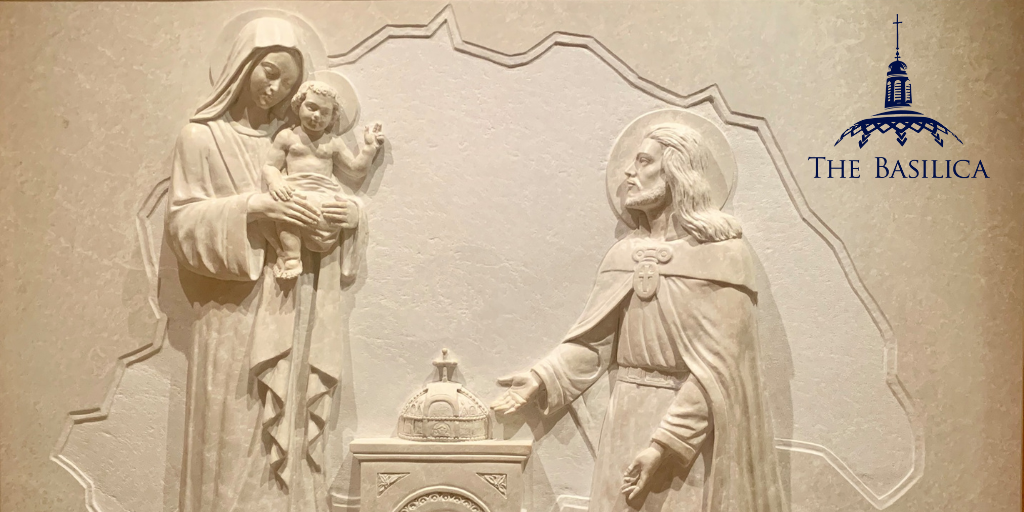
On August 16, we observe the Feast of Saint Stephen, the patron saint and first Christian king of Hungary. Though he is best remembered for his efforts to establish churches in the country, he also had a great heart for the poor and supported them throughout his rule. Today, we invite you to learn more about his life, legacy, and where you can find him portrayed in the Basilica.
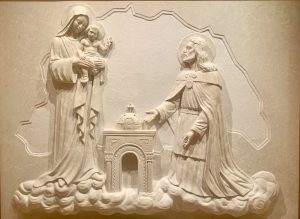
Early Life and Rule
Although Saint Stephen was raised by a pagan family, he decided to follow Christ at a young age. On Christmas Day in the year 1001, Stephen assumed the throne as king of Hungary. Determined to unify the country under Christianity, he implemented a series of strict reforms, outlawing pagan customs while leading efforts to evangelize and build new monasteries and churches across the nation. But his rule was not without its difficulties; some of his nephews plotted to murder him, and his son Emeric suffered an early death from a hunting accident. In his later years, Stephen also experienced excruciating health complications.
Supporting the Impoverished
Throughout his rule, Stephen assisted those in need. On one occasion, he donned a disguise to sneak unrecognized into a dangerous district and deliver alms to the poor. Unfortunately, his attempt was foiled by a group of ruffians who attacked him and stole the money he had on hand. Saint Stephen, however, reacted graciously, and continued his support of the impoverished.
Keeping Christ at the Center
Despite his overwhelming responsibilities as ruler, Stephen always made time for prayer, according to historians. Writing to his son Emeric, he once said, “The observance of prayer is the greatest conquest of true salvation… Continuous prayer is purification and the remission of sins.”
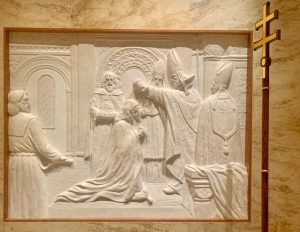
Saint John Paul II in his 2002 message to the Hungarian people, called Saint Stephen and his family “the first saintly Hungarian family.” Today, Saint Stephen remains the patron saint of Hungary. Saint John Paul II adeptly described his impact:
“At the dawn of the millennium, the figure of King Saint Stephen stands out. He founded the State on the firm rock of Christian values, and for this reason wanted to receive the royal crown from the hands of my Predecessor, Pope Sylvester II. Thus the Hungarian nation was founded in deep unity with the Chair of Peter and bound by close ties to other European countries, which shared the same Christian culture. This culture was the vital sap flowing through the fibers of the developing plant, which assured its growth and vigor, and prepared the extraordinary flourishing that was to come.”
Saint Stephen in the Basilica
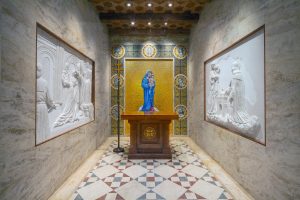
In 2006, a Year of Prayer to mark the 50th anniversary of the Hungarian Revolution and War of Independence of 1956, Péter Cardinal Erdő, Archbishop of Esztergom-Budapest and President of the Hungarian Episcopal Conference, petitioned the Basilica to establish a chapel in honor of Our Lady of Hungary and Saint Stephen. Called the Our Lady of Hungary Chapel, it is the second chapel in the National Shrine to be donated and supported by a country outside of the United States.
The altar in the chapel is made of Hungarian Tardos marble and modeled after the main altar at the Basilica of Saint Stephen in Budapest, the largest church in Hungary. On the left side of the chapel, the free-standing primatial cross indicates that the Archdiocese of Esztergom-Budapest is a primatial see; and on the right is a first-class relic of Saint Stephen. In addition to the relic, Saint Stephen is also honored in the relief sculptures flanking the walls of the chapel.
Sources:
Butler’s Lives of the Saints (ed. by Bernard Bangley)
The Basilica Guidebook, Dr. Geraldine Rohling

